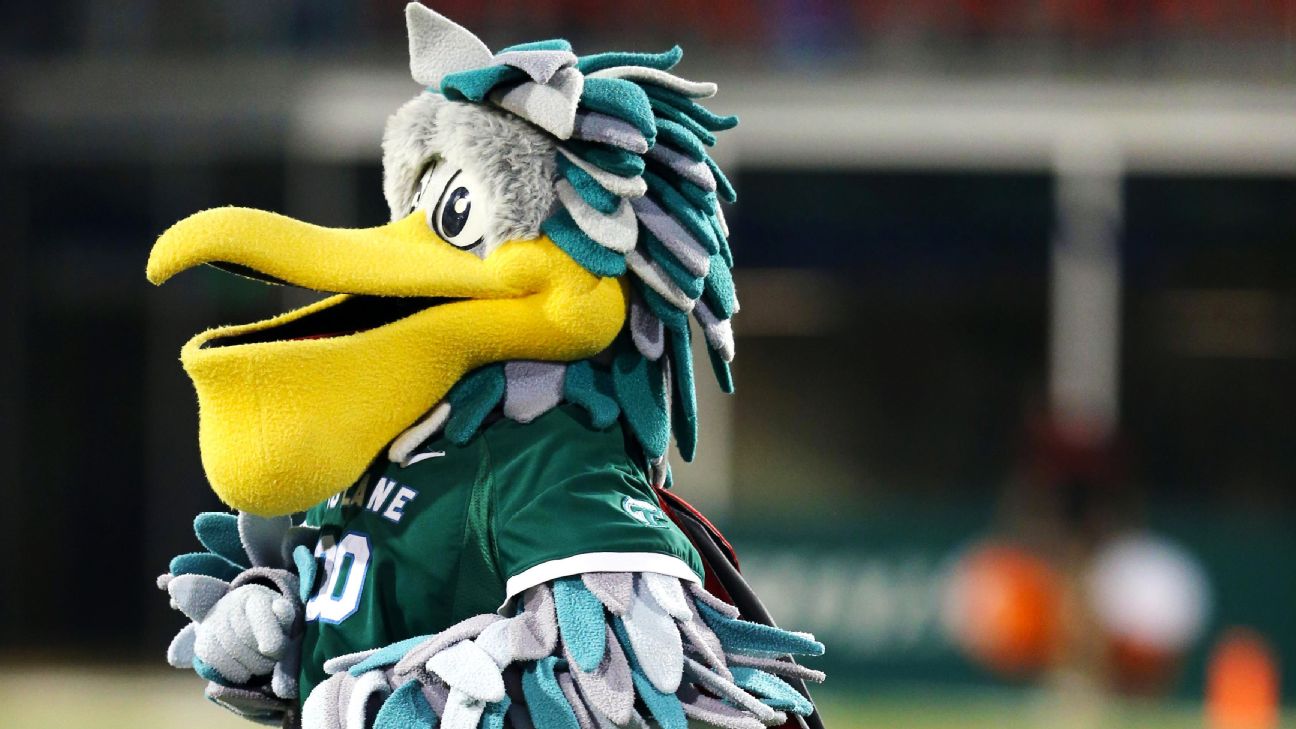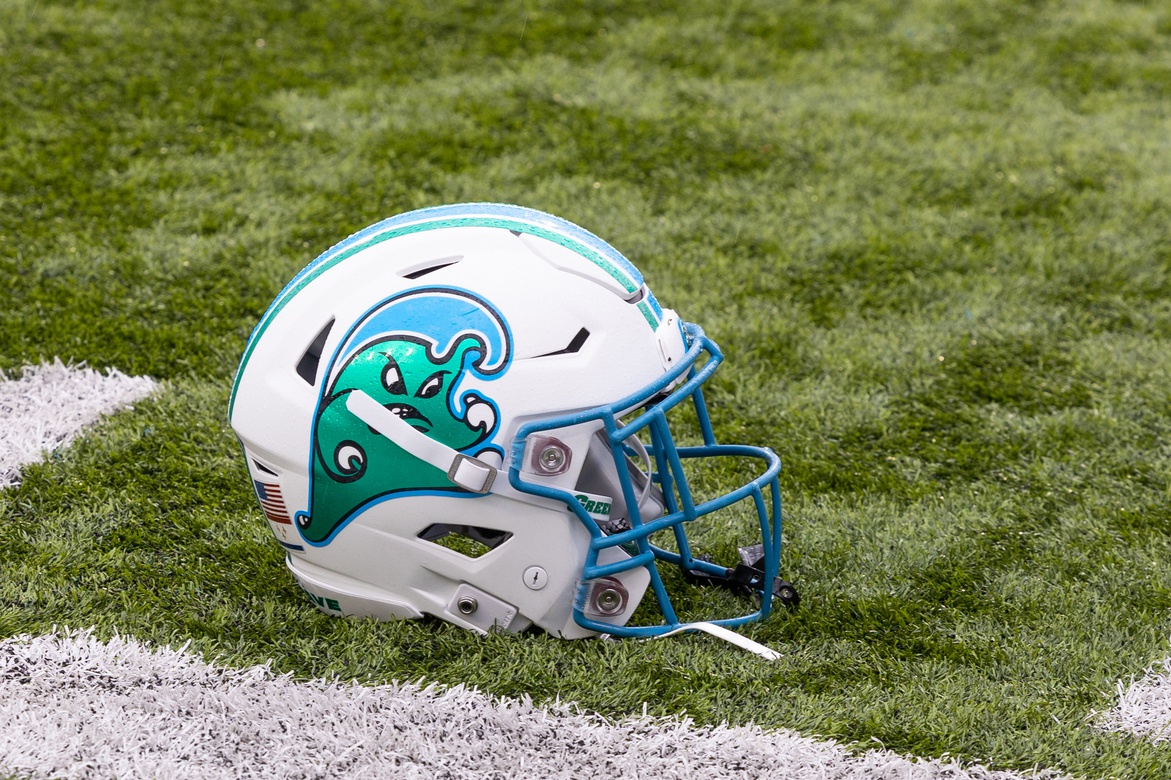Their success in the 2022 college football season, a remarkable fairytale-esque turnaround, made the Tulane Green Wave one of the most loved programs of the year. But, how much do you know about the Tulane Green Wave mascot, the nickname, or about the history of the program? Let’s surf through it together.

Who (or What) Is the Tulane Green Wave Mascot?
The current Green Wave mascot is Riptide the Pelican, who has served as the mascot since 1998. The mascot harkens back to the origins of the program, where a pelican riding a surfboard was Tulane’s mascot and program logo for over 50 years.
Unlike some programs that stick with the same mascot for years, the Green Wave mascot has undergone several identity changes since the Olive and Blue began playing football in 1893.

The original surfing pelican mascot was replaced in 1945 by what was described as a “mischievous little boy.” That particular Tulane mascot was drawn up by local cartoonist John Chase who named his creation “Greenie” in reference to the nickname of the football program at that time.
Greenie lasted for almost 20 years as Tulane’s mascot. However, in 1964, the school decided to do away with the mischievous little boy — once described as being “the most accurate symbol that’s ever represented Tulane’s student body” — and replaced him with the mascot that would become synonymous with the program’s nickname.
What Is the Angry Wave Mascot?
The Green Wave mascot became the main symbol of the Tulane football program in 1964. The program had been officially named the Green Wave in 1920, and it took over 40 years for the mascot to fall in line with the nickname of the program.
The original Green Wave mascot became known as the “Angry Wave.” It was meant to depict how a wave looks as it breaks, but the costume for the mascot was essentially a giant green sack with a face. Albeit, an angry face.
The Angry Wave mascot was born and was popular with fans of the program for nearly 20 years. Several adaptations were made to the Angry Wave, including the final one, which was nicknamed “Gumby” by students.
Although he held firm as the official Tulane mascot until the introduction of Riptide the Pelican in 1998, Gumby did come under attack from a pretender to the throne during the 1980s.
MORE: List of College Football Mascots
Poseidon — god of the sea, earthquakes, and horses — became a popular character at Tulane games. Clad in a toga emblazoned with the 1986 version of the Tulane logo, he also sported a pair of horns in keeping with the various artistic impressions of the Greek god.
Although he was popular with fans, Poseidon — or Neptune as he was oft-referred to — was never the official Tulane Green Wave mascot. However, he deserved his own spot in telling the varied history of Tulane’s mascot.
What Does Green Wave Mean?
The Green Wave is one of the more unusual nicknames in college football. While it has given rise to many varying logos and mascots and is a writer’s dream for making puns, what does Green Wave mean, and where does the unusual nickname come from?
Between 1893 and 1919, the Tulane football team was known simply as the Olive and Blue, referring to the unique color combination that they retain to this day. In 1919, the Tulane Weekly renamed them the Greenbacks. However, in 1920, the waves of change began to flow over the football program.
Earl Sparling wrote the song “The Rolling Green Wave,” which went as follows:
Roll, Green Wave, roll them down the field!
Hold, Green Wave, that line must never yield!
When those Greenbacks go charging thru the line,
They’re bound for Victory,
Hail Green Wave, for you we give a cheer.
Hail Green Wave, for you we have no fear,
So ev’ry man on ev’ry play,
And then we’ll win the game today,
Hurrah for Old Tulane.
The song became so popular that during the Tulane and Mississippi A&M game of 1920, the Tulane Hullabaloo referred to the team as the Green Wave, and by the end of the season, the name had caught on.
Although the Greenbacks and Greenies remained in use for a while by some, the Green Wave became the official nickname and inspiration for the Tulane mascot.

